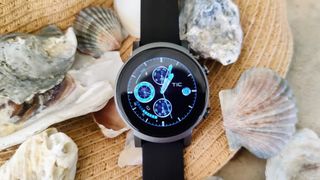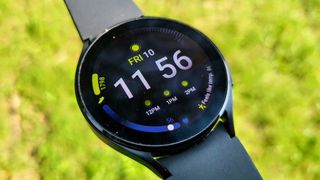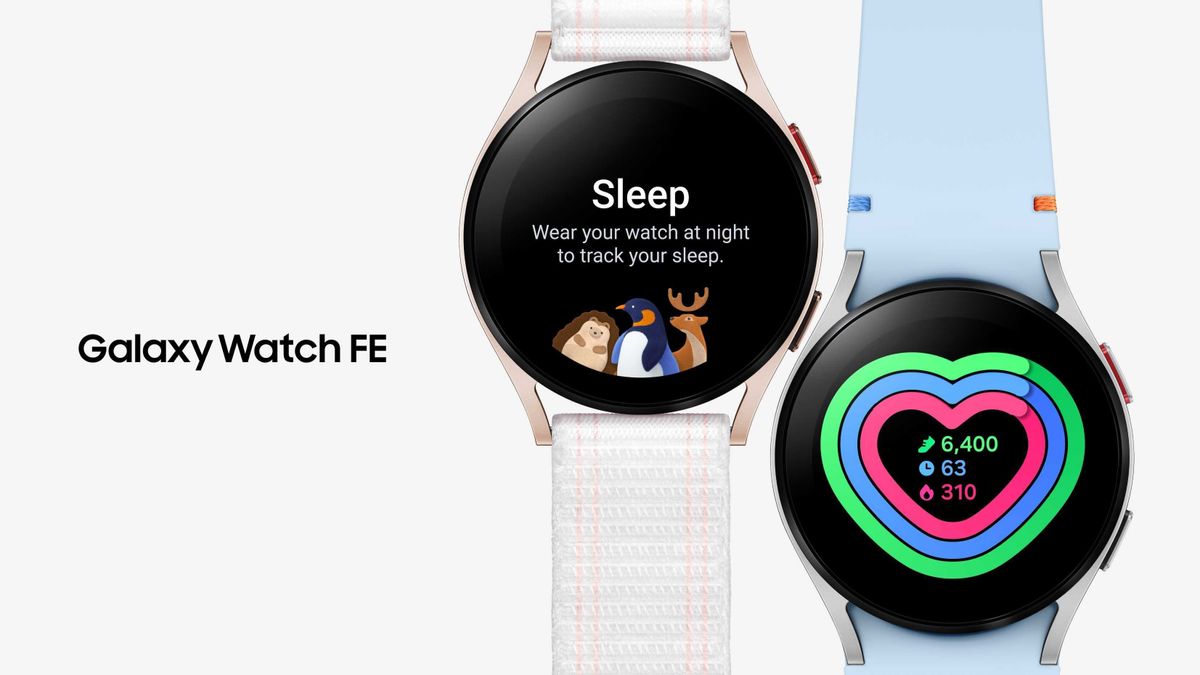Samsung recently launched the new Galaxy Watch FE this week, which is actually just a 2024 ‘refresh’ of the Galaxy Watch 4. The smartwatch has more or less the same specs, chipset and design as the 2021 model, with the exception of a new sapphire glass over the display for better scratch protection. While rebooting the Galaxy Watch 4 may seem like a strange move for Samsung, I think it’s quite genius. In fact, it’s exactly what Wear OS needs: more affordable smartwatches.
I’ve been reviewing Wear OS smartwatches for a number of years and I’ve often cringed at the prices some of these companies charge for these devices. Fossil, which pulled an LG and exited the smartwatch business earlier this year, charged $299 for the Fossil Gen 6, which didn’t even run Wear OS 3 at launch and had very questionable performance. Samsung’s Galaxy Watches now cost more than ever, with the Watch 5 Pro model being in the same price range as a cheap Android phone and even the price of the Pixel Watch 2 making me hesitate (don’t even get me started on the Montblanc Summit 3).
The only exception I’ve seen is the TicWatch E3, which was launched a few years ago. That watch was built relatively cheaply and lacked the best features of more expensive TicWatch models, such as the dual-display technology, but the price made it worth it. For $199 you got a smartwatch that was much cheaper than the competition and performed surprisingly well with the Snapdragon Wear 4100, despite Wear OS 3 coming much later.
In fact, I’m a little disappointed that we didn’t get a TicWatch E4 or something similar, especially now that Wear OS 4 is here and Wear OS 5 is on the way, both of which will likely require newer chips like the Snapdragon W5 Plus. Gen 1. But seeing Samsung launch the Galaxy Watch FE gives me some hope that cheaper Wear OS watches could be a thing again if companies play their cards right.

Anshel Sag, principal analyst at Moor Insights & Strategy, agrees, saying the launch of the cheaper smartwatch was a smart move by Samsung. “I think the Galaxy Watch FE allows Samsung and its partners to offer a lower-cost option that can easily be discounted or given away for free as a bundle item, and broadens the price range of products it offers for wearables.”
I’m not saying that every cheap Wear OS smartwatch should be a rebranded version of an older model, but I do think companies should keep affordability in mind when developing new models. At $349.99, the Pixel Watch 2 is asking for a lot, and that’s not even including LTE. If I didn’t already have one, I’d have a hard time spending that money on it, and honestly, I’m still trying to figure out if it’s worth it (don’t get me wrong, it really is a great smartwatch). But I’d like to see a future Pixel Watch 3a with a toned-down Snapdragon chip and some other compromises, especially if it means spending just $199 to be part of the Pixel ecosystem.
Keep in mind that Google just launched the Fitbit Ace LTE for $229, and Qualcomm is already offering smartphone OEMs cheaper alternatives to its chips, like the Snapdragon 8s Gen 3, so both companies could very well make this happen. Apple already sells the cheaper Apple Watch SE, which was apparently good enough to warrant an upgraded model two years later, so I’d like to see more Android OEMs follow suit. Sag points out the importance of launching cheaper models because it allows people to make decisions based on price “and doesn’t price certain people out of the market because their appetite to spend on a smartwatch is less than $299.”
The Galaxy Watch FE is a blueprint for how other companies can make cheaper Wear OS watches.
This is why the lack of cheaper Wear OS watches is a glaring omission to me, especially as companies pack more features into their devices to drive up the price. Wear OS doesn’t have the same reputation as WatchOS, and while that’s starting to change, I’m not convinced too many people are clamoring to spend Garmin or Apple Watch amounts of money for a Wear OS smartwatch. It’s good that we have premium smartwatches that perform well, but Wear OS also needs to become more financially accessible.
This also applies to companies like OnePlus, which is rumored to have a potentially budget-friendly OnePlus Watch 2 variant coming to market soon. Then there’s Motorola, which stayed away from Wear OS on its budget-friendly smartwatches. A new Wear OS model from the company would be perfect, though, as it already makes some of the most affordable phones on the market.
That said, Sag warns that while there should be more affordable Wear OS models, there also needs to be a happy medium and companies need to be careful. “I think it’s a problem, but I also believe that if you go too cheap, the experience becomes really bad and not worth making. Kind of like most really cheap smartphones.”

One of the reasons Android is so great is because it suits everyone, from those willing to spend an arm and a leg on a new phone to those who just want something with the basics that won’t break the bank. Now that Wear OS is finally coming into its own with big players like Samsung and Google at the helm, the same philosophy should be applied to the wearable platform to reach more people.
